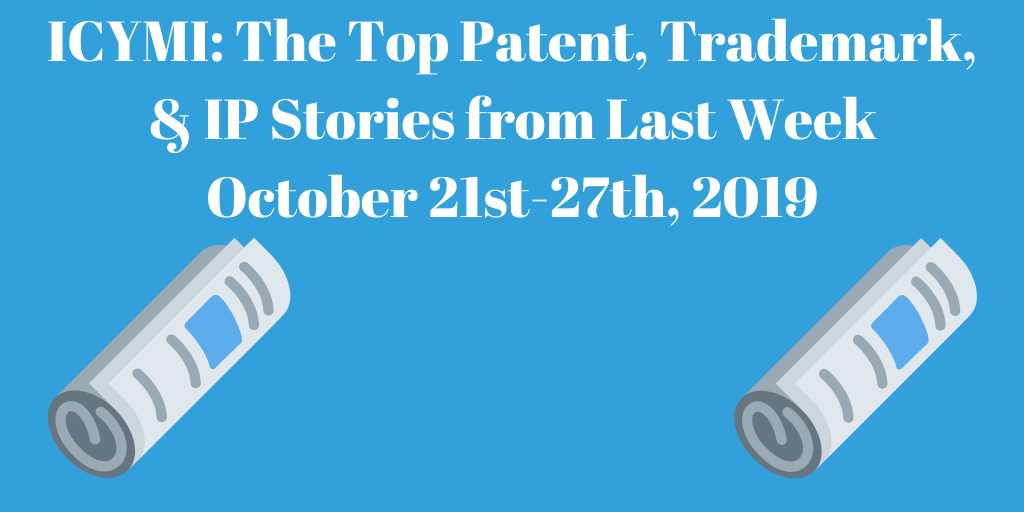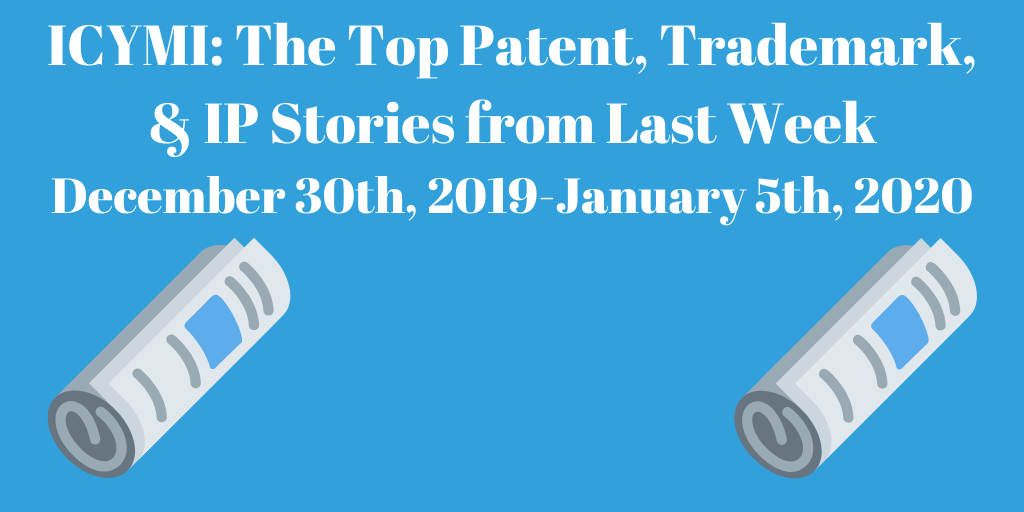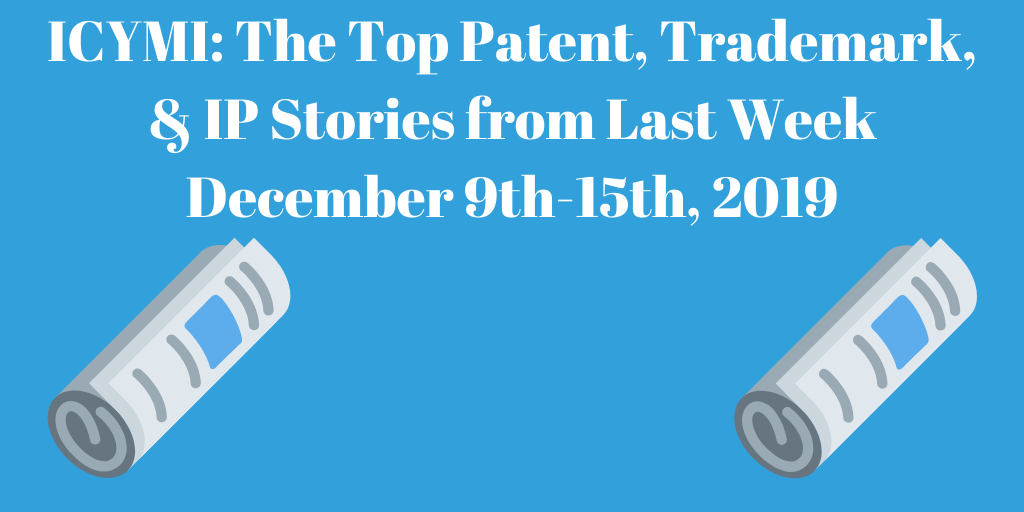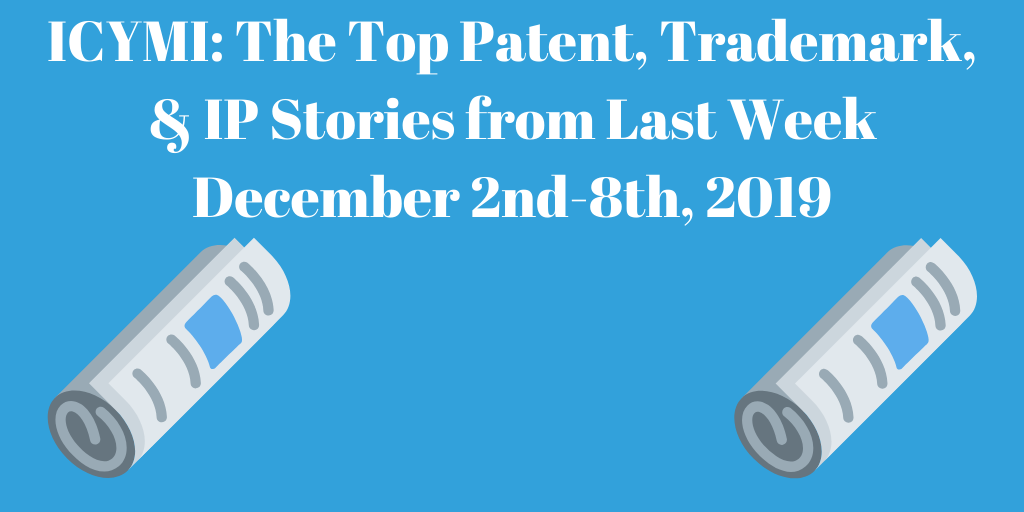Top Patent, Trademark, and IP Stories from Last Week (10/21-10/27/19)
“House Overwhelmingly Approves Contentious New Copyright Bill”
Last week, the House of Representatives approved the “Copyright Alternative in Small-Claims Enforcement Act of 2019 (CASE Act)” with a 410-6 vote. The bill will make it easier for individuals to pursue copyright infringement cases with the Copyright Office without having to go to federal court. The Copyright Office would handle the complaints and determine damages owed. Infringement claims would be capped at $15,000 for each infringement with a max of $30,000. The measure would serve as an alternative for independent content creators and artists who do not have the ample resources or legal teams of large companies they tend to take to court.
Despite making it easier for individuals to claim damages for infringements, especially online, the bill has been met with backlash from prominent advocacy groups including the ACLU and Electronic Frontier Foundation (EFF). These groups believe the measure will lead to a stifling of free speech online, copyright trolling via bots, and the potential to bankrupt users for posting infringing memes. The EFF released a statement writing “if you get one of these notices (maybe an email, maybe a letter—the law actually does not specify) and accidentally ignore it, you’re on the hook for the money with a very limited ability to appeal. $30,000 could bankrupt or otherwise ruin the lives of many Americans.” The bill still needs to pass the Senate. To read more about this story, click here (via The Verge, October 22nd, 2019).
“Apple Is Patenting an Autonomous Navigation System That Learns”
A new patent from Apple published last week outlines an “autonomous navigation system” that will enable vehicles to drive autonomously based on routes predetermined by other vehicles. In order to do this, one or more vehicles would drive the route manually and develop a “map” of the route after multiple drives. When the route exceeds a “threshold confidence indication,” other autonomous vehicles would be able to travel that route based on the shared network of driving routes based in the cloud. This would set up an overlapping map of sorts in order to build a larger map. For routes not mapped yet, a driver could simply drive the route manually until the threshold is exceeded and then be able to drive it autonomously.
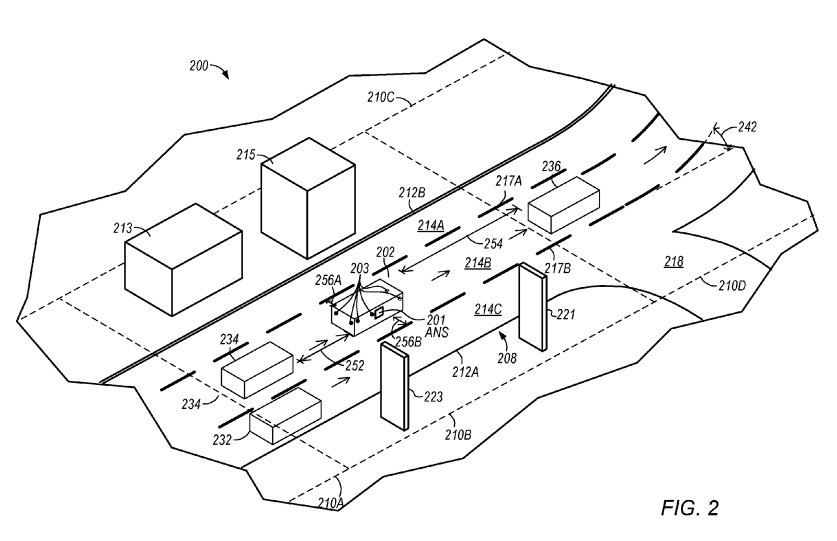
The patent claims this method would not require the “excessive expenditure of time and effort” the alternative method of developing a map manually would take. Such a method would require the map maker to account for ever-changing geographic barriers, signs, intersections, construction, etc. On the other hand, the “map” created by the method outlined in this patent would be shared amongst the network to constantly update the route. To read more about this story, click here (via Car and Driver, October 26th, 2019)
“China Gives on Key US Trade-War Demand”
A few weeks back, President Trump announced the beginning of a trade deal with China following 19 months of fierce exchanges between the two superpowers. The agreement is still being drafted however prevention of intellectual property theft is supposedly an integral part of the deal. IP protection has been one of the major barriers to finalizing a deal however China took huge strides last week by passing a law to protect the IP of foreign companies doing business in the country. For many years, China has forced foreign companies to hand over their technology in order to do business there. The new law, which is to take effect on January 1st, would “ensure better protection for trade secrets and never allow forced technology transfer.”
According to vice chairman of the National Development and Reform Commission in China, Ning Jizhe, the law would also “strengthen and speed up improvements made to standards for patents, trademarks, copyright infringement, counterfeiting judgments, inspection and identification.” This would include harsher punishments for infringements as well. Although China has a long way to go in protecting IP, this law is a great first step in establishing a higher standard than the current one. To read more about this story, click here (via FOX Business, October 24th, 2019)
“Patent King Huawei Lags Intel and Qualcomm in Quality, Study Finds”
In 2018, Chinese telecommunications giant Huawei filed the most patent applications ever in a single year to the World Intellectual Property Organization (WIPO)- an astounding 5,405. According to a new study however, only 21% of those could be classified as “innovative.” This is considerably low given tech peers such as Intel yield 32% and Qualcomm 44%, respectively. Such poor quality is reflective of a growing patent problem in China where, despite filing the most patents by any county, 9 out of 10 design patents get discarded after people refuse to maintain them. To their credit, Huawei has begun purchasing foreign patents in order to bolster their patent portfolio. These account for 67% of their “highly innovative” patents but patents developed from their company are considered poor. Huawei has started to bring on American engineers to fix this. Still, this demonstrates how important it is to be skeptical when it comes to China patent quality. To read more about this story, click here (via Nikkei, October October 27th, 2019).

